Abstract
OBJECTIVE. This study examined whether victimization prevention instruction in school has any impact on children's behavior in situations of real victimization threat. METHODS. Telephone interviews were conducted in 1992 with a nationally representative sample of youths aged 10 to 16 and their caretakers, and the experience of 1457 of these children was followed up more than a year later. RESULTS. Exposure to a more comprehensive prevention program was not associated with reduced incidence of victimization, injury, or upset. However, some of the exposure conditions were associated with an increased likelihood that the children would disclose victimizations, an increased likelihood that they would see themselves as having successfully protected themselves, and a decreased likelihood that they would blame themselves for the episode. Exposed children acquired some knowledge about sexual abuse and, when actually confronted by a threat, an ability to do the things they had been taught. A nonsignificant trend was also noted toward increased injury for exposed children during sexual assaults. CONCLUSION. These mixed findings suggest that prevention educators need to plan programs based on realistic goals for what can be accomplished.
Full text
PDF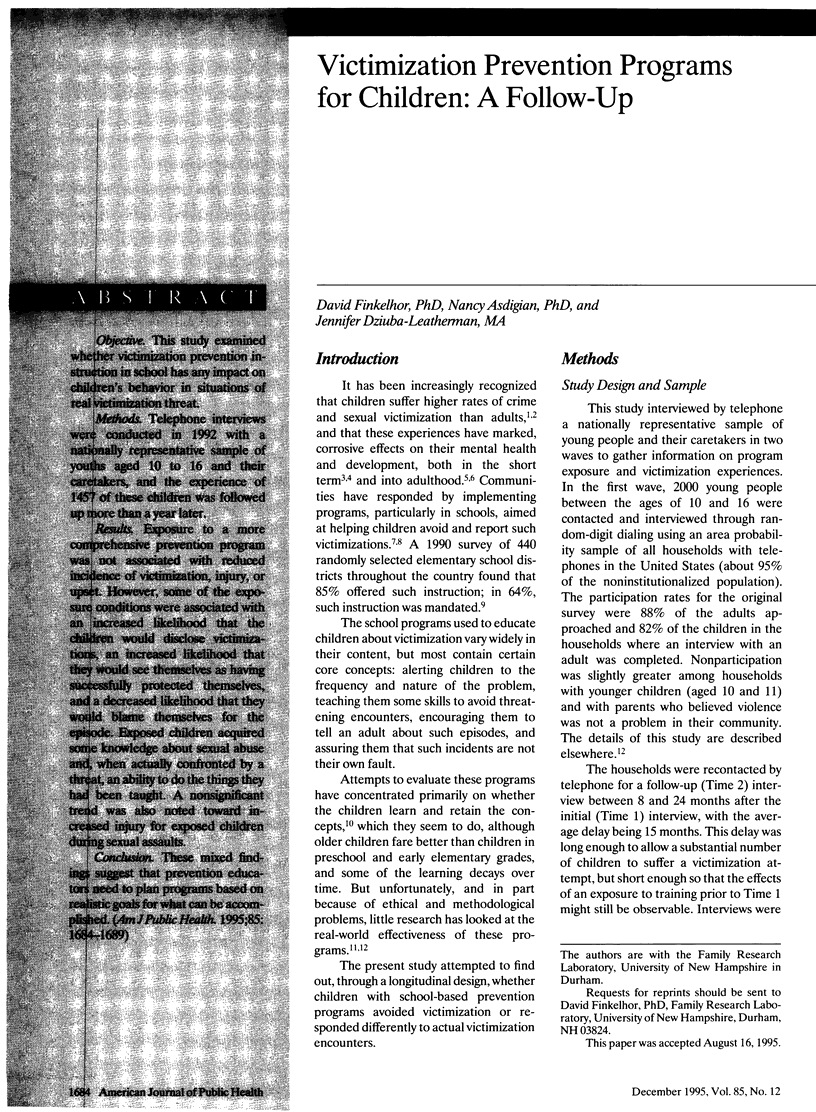
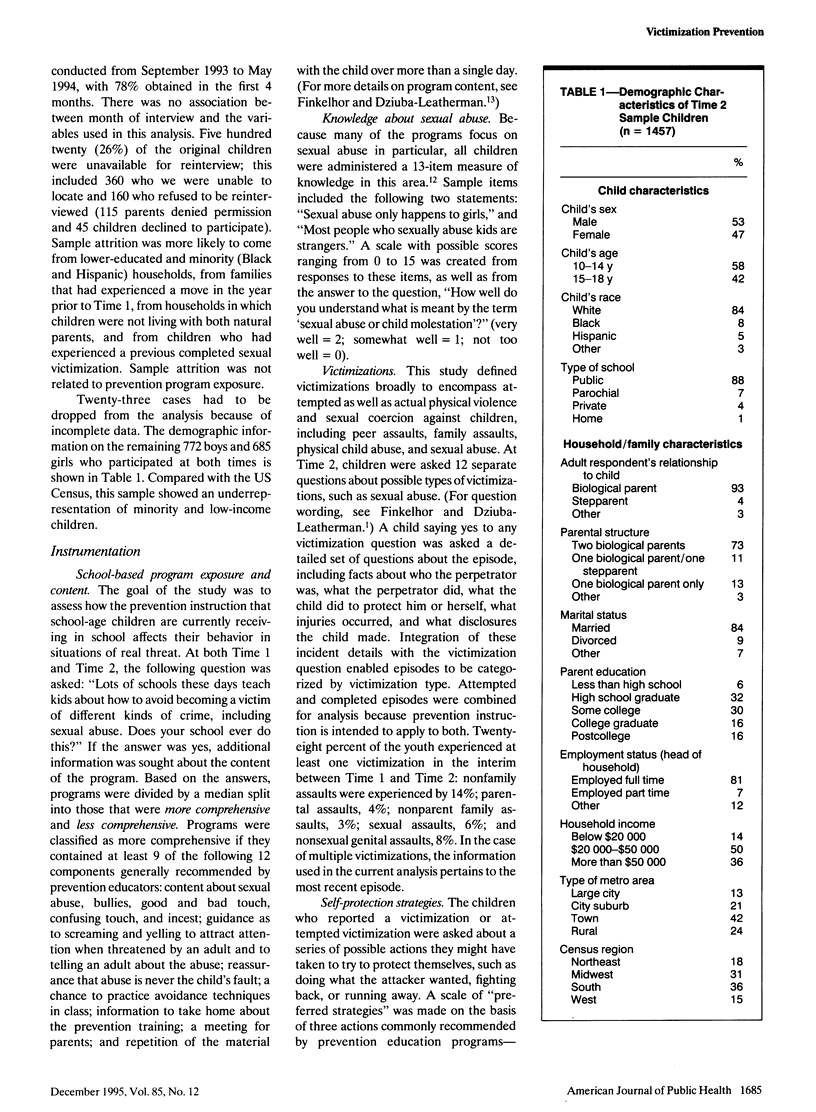
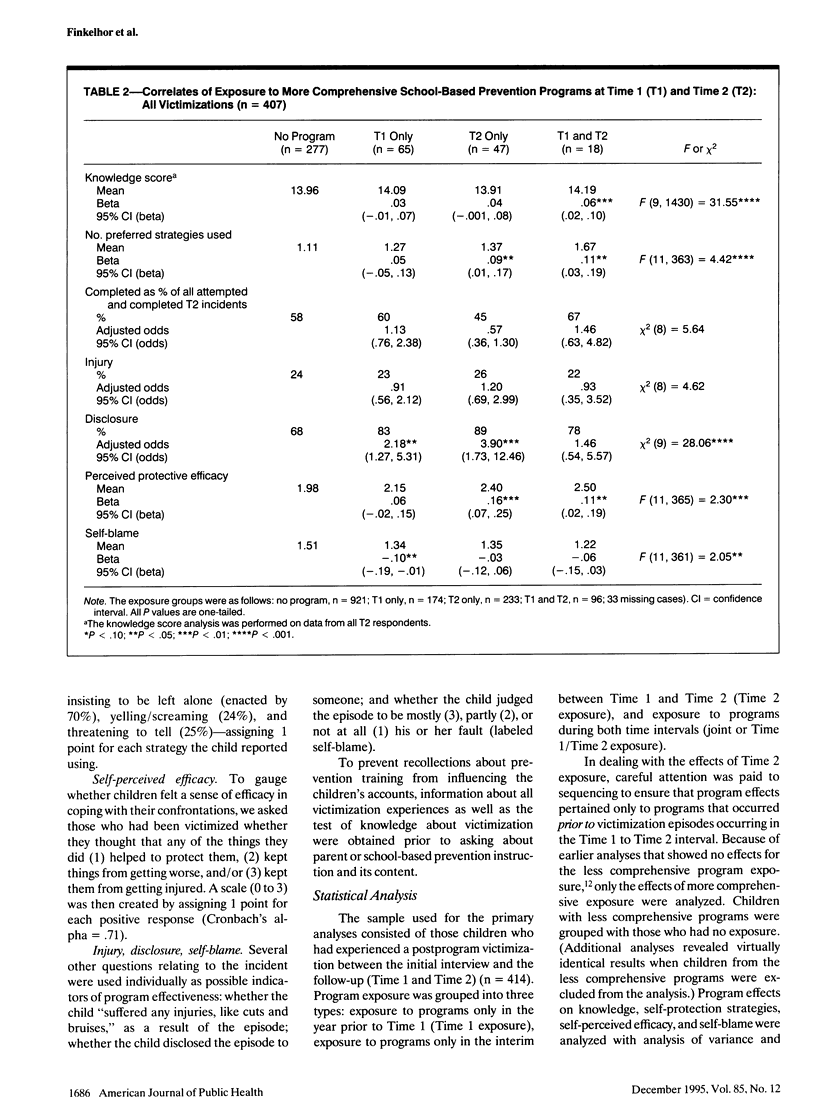

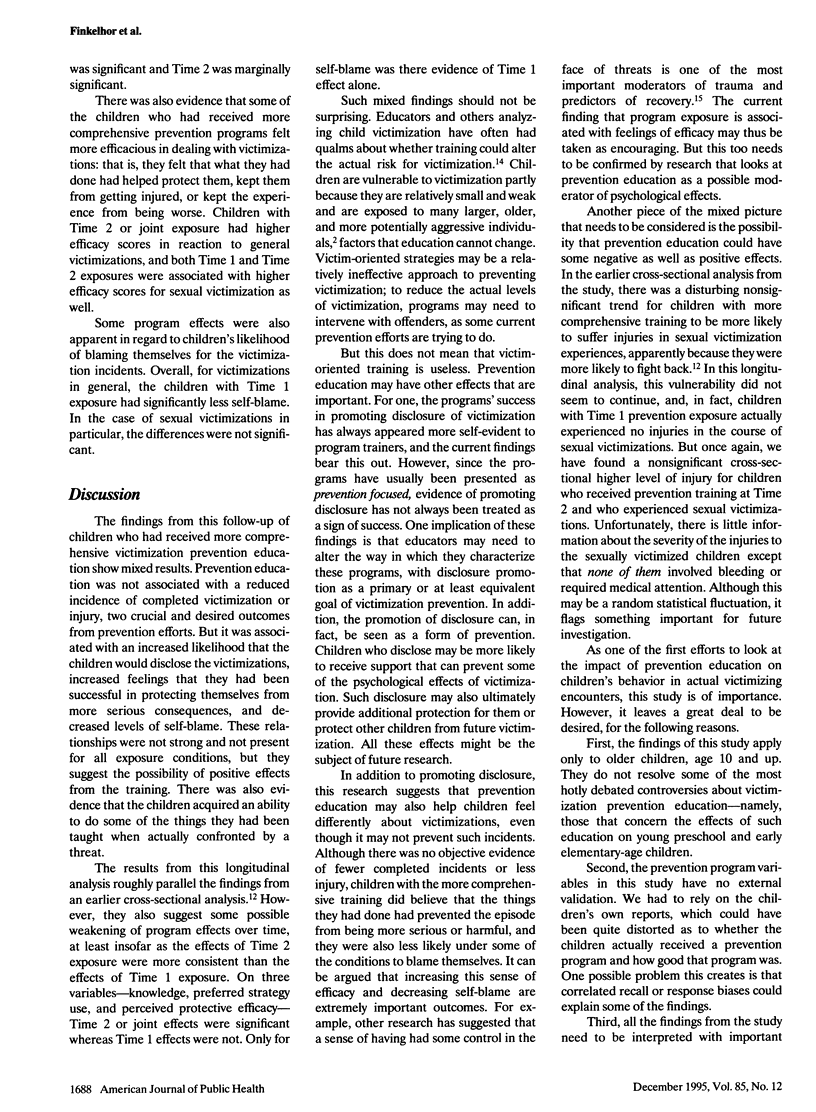
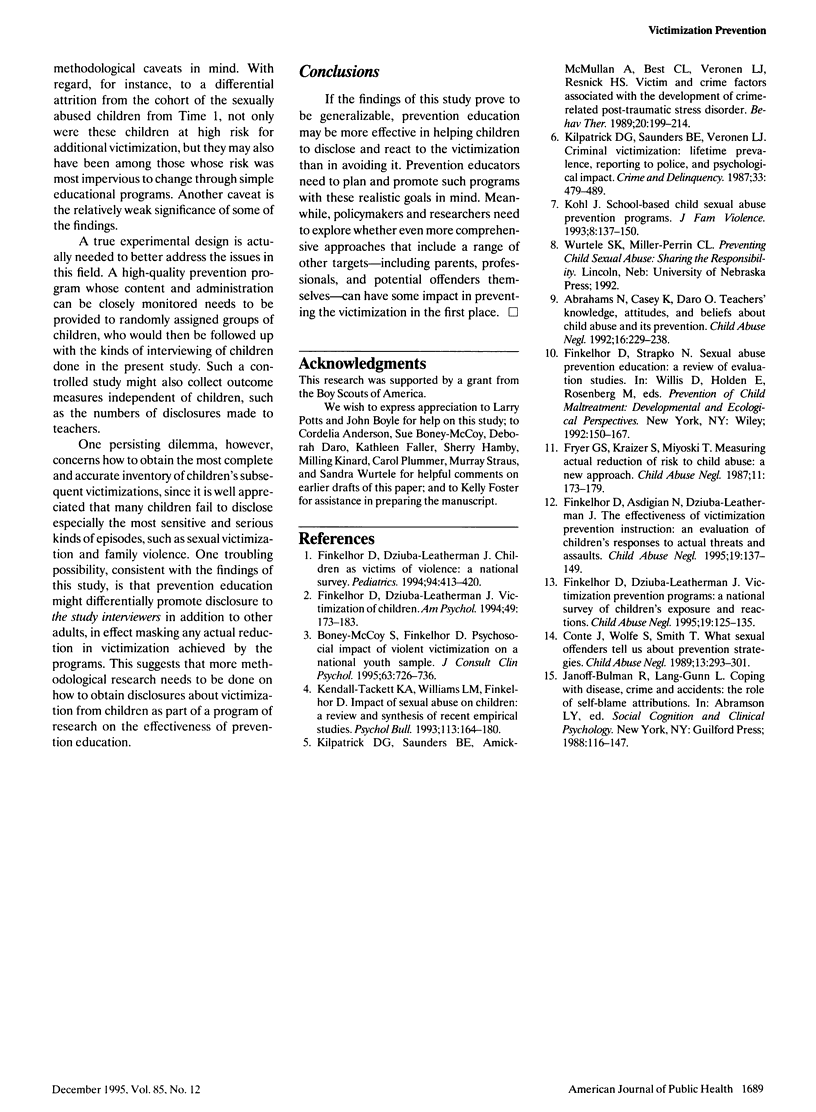
Selected References
These references are in PubMed. This may not be the complete list of references from this article.
- Abrahams N., Casey K., Daro D. Teachers' knowledge, attitudes, and beliefs about child abuse and its prevention. Child Abuse Negl. 1992;16(2):229–238. doi: 10.1016/0145-2134(92)90030-u. [DOI] [PubMed] [Google Scholar]
- Boney-McCoy S., Finkelhor D. Psychosocial sequelae of violent victimization in a national youth sample. J Consult Clin Psychol. 1995 Oct;63(5):726–736. doi: 10.1037//0022-006x.63.5.726. [DOI] [PubMed] [Google Scholar]
- Conte J. R., Wolf S., Smith T. What sexual offenders tell us about prevention strategies. Child Abuse Negl. 1989;13(2):293–301. doi: 10.1016/0145-2134(89)90016-1. [DOI] [PubMed] [Google Scholar]
- Finkelhor D., Dziuba-Leatherman J. Children as victims of violence: a national survey. Pediatrics. 1994 Oct;94(4 Pt 1):413–420. [PubMed] [Google Scholar]
- Finkelhor D., Dziuba-Leatherman J. Victimization of children. Am Psychol. 1994 Mar;49(3):173–183. doi: 10.1037//0003-066x.49.3.173. [DOI] [PubMed] [Google Scholar]
- Fryer G. E., Jr, Kraizer S. K., Miyoshi T. Measuring actual reduction of risk to child abuse: a new approach. Child Abuse Negl. 1987;11(2):173–179. doi: 10.1016/0145-2134(87)90055-x. [DOI] [PubMed] [Google Scholar]
- Kendall-Tackett K. A., Williams L. M., Finkelhor D. Impact of sexual abuse on children: a review and synthesis of recent empirical studies. Psychol Bull. 1993 Jan;113(1):164–180. doi: 10.1037/0033-2909.113.1.164. [DOI] [PubMed] [Google Scholar]


